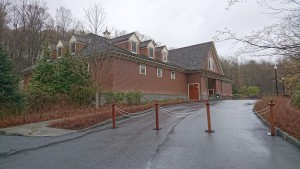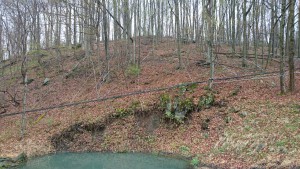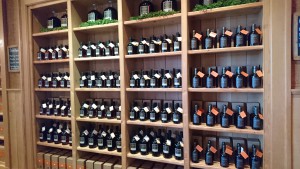 This past weekend, for my independent field trip, I visited Crown Maple’s sugarhouse at Madava Farms. Crown Maple is a relatively new maple syrup company that began in 2010, but plans to be the largest maple syrup producer in the world in a few years. The owners, Robb and Lydia Turner, lived in New York City but grew up on farms, and wanted a more rural place for their daughters to be able to escape from city life. After purchasing the land, they realized they were sitting on a gold mine of maple trees, and began the process of tapping the trees. In order to grow the company, they also purchased over 4,000 acres in Vermont, to increase the number of trees available for tapping. In total, they had around 90,000 taps total this past year, but have the capacity to have up to 400,000 as they keep growing.
This past weekend, for my independent field trip, I visited Crown Maple’s sugarhouse at Madava Farms. Crown Maple is a relatively new maple syrup company that began in 2010, but plans to be the largest maple syrup producer in the world in a few years. The owners, Robb and Lydia Turner, lived in New York City but grew up on farms, and wanted a more rural place for their daughters to be able to escape from city life. After purchasing the land, they realized they were sitting on a gold mine of maple trees, and began the process of tapping the trees. In order to grow the company, they also purchased over 4,000 acres in Vermont, to increase the number of trees available for tapping. In total, they had around 90,000 taps total this past year, but have the capacity to have up to 400,000 as they keep growing.
All the trees are hooked up to each other through an elaborate system of tubes, which lead to a vacuum pump in a collection house. In season, which runs during the time in  which the days are in the 40s-50’s but the nights are freezing, there are from 1-3 spiles in each maple tree, depending on it’s size and age. After running to the collection house, the sap (which at this point is clear and liquidy, only about 2% sugar) runs through pipes underground to the sugarhouse, which is where the café and gift shop are also located. In the sugarhouse, the sap goes through a variety of steps to remove most of the water, as it is bottled at 67% sugar. Based on the time of year and temperatures outside, the syrup will come out in different forms, as “Amber,” “Dark,” or “Very Dark.” Crown Maple also produces a “Bourbon Barrel Aged” syrup, as well as maple sugar, which is made by cooking the syrup until all the water is gone. They also sometimes have a “Golden” syrup, but the temperatures have not been cold enough the past two years, so they have not gotten any of this flavor.
which the days are in the 40s-50’s but the nights are freezing, there are from 1-3 spiles in each maple tree, depending on it’s size and age. After running to the collection house, the sap (which at this point is clear and liquidy, only about 2% sugar) runs through pipes underground to the sugarhouse, which is where the café and gift shop are also located. In the sugarhouse, the sap goes through a variety of steps to remove most of the water, as it is bottled at 67% sugar. Based on the time of year and temperatures outside, the syrup will come out in different forms, as “Amber,” “Dark,” or “Very Dark.” Crown Maple also produces a “Bourbon Barrel Aged” syrup, as well as maple sugar, which is made by cooking the syrup until all the water is gone. They also sometimes have a “Golden” syrup, but the temperatures have not been cold enough the past two years, so they have not gotten any of this flavor.
As part of the tour we took, we got to taste these various syrups. It is amazing how different the various syrups taste. The “Dark” was my favorite— it had a slightly stronger taste than the “Amber,” but did not have the weird aftertaste left by the “Very Dark.” I was not a huge fan of the one that was aged in a bourbon barrel, but I was amazed at how much it tasted like bourbon, considering there was no actual bourbon in it.
it had a slightly stronger taste than the “Amber,” but did not have the weird aftertaste left by the “Very Dark.” I was not a huge fan of the one that was aged in a bourbon barrel, but I was amazed at how much it tasted like bourbon, considering there was no actual bourbon in it.
Throughout the tour, I was surprised at the efforts taken to make this intensive process more sustainable. Although extracting the sap in the first place is fairly sustainable, since it does not damage the trees and, if anything, encourages the protection of these large areas of old forests, getting the sap from it’s original 2% sugar to 67% sugar takes a lot of energy. However, Crown Maple invested in some machines not normally used in maple syrup production that make this process more efficient, such as using reverse osmosis. Additionally, they capture the steam created from the evaporating water and use it to pre-heat syrup, as well as sterilize the steel barrels they store the syrup in. Crown Maple also value keeping their production local, and try to hire workers from local communities.
Overall, it was a sweet visit to Crown Maple, and I may have to go back for more in the future.